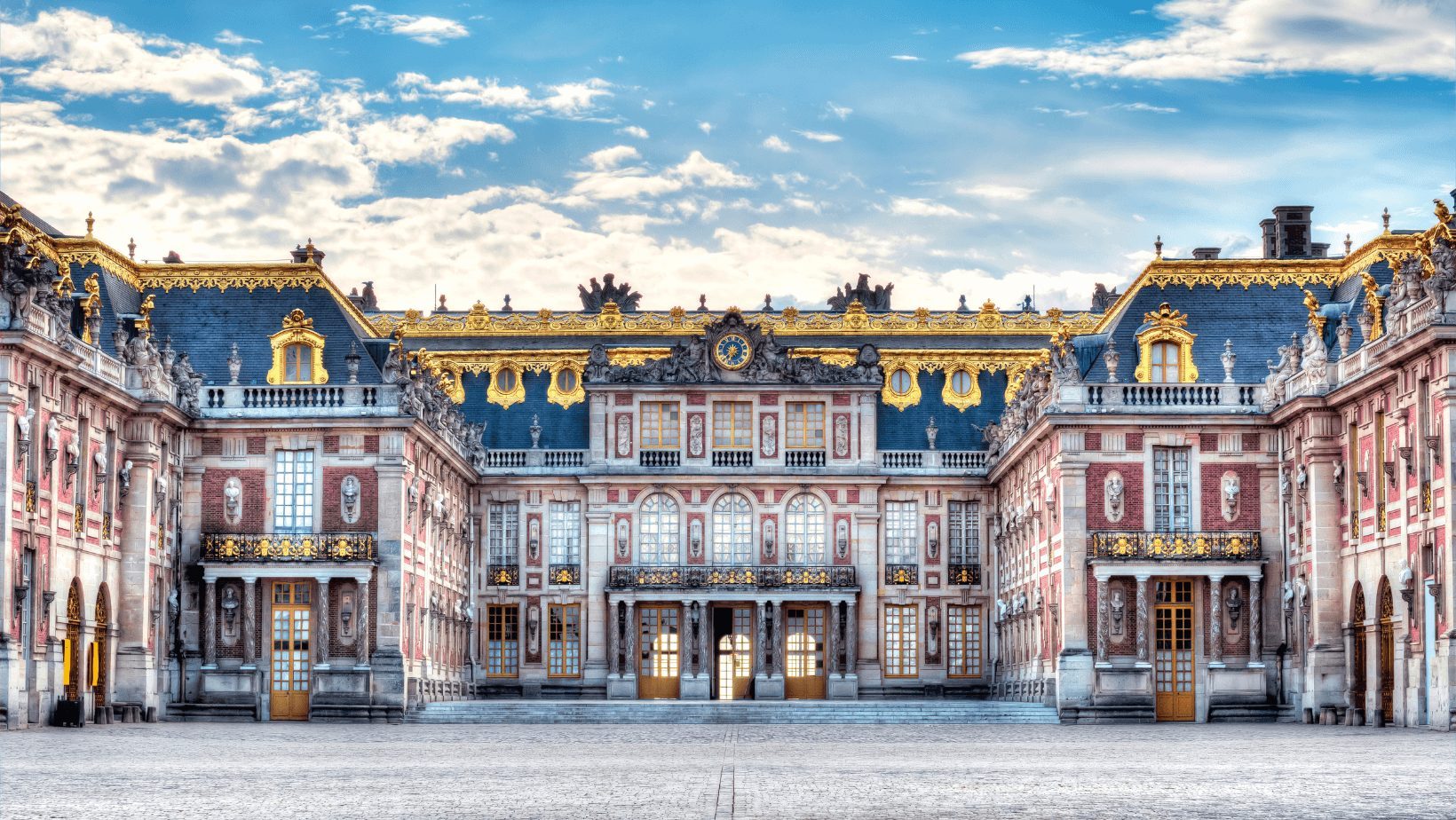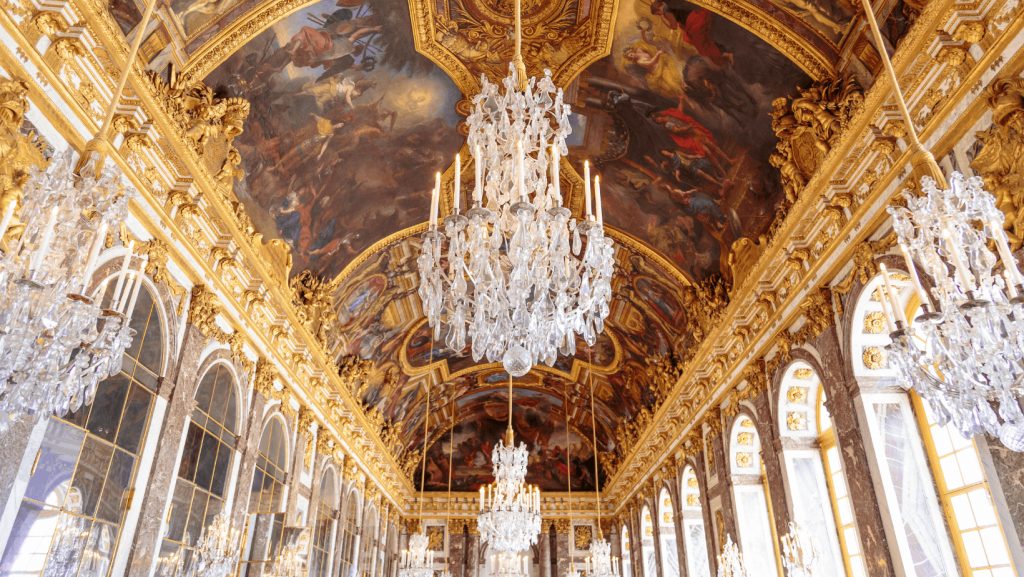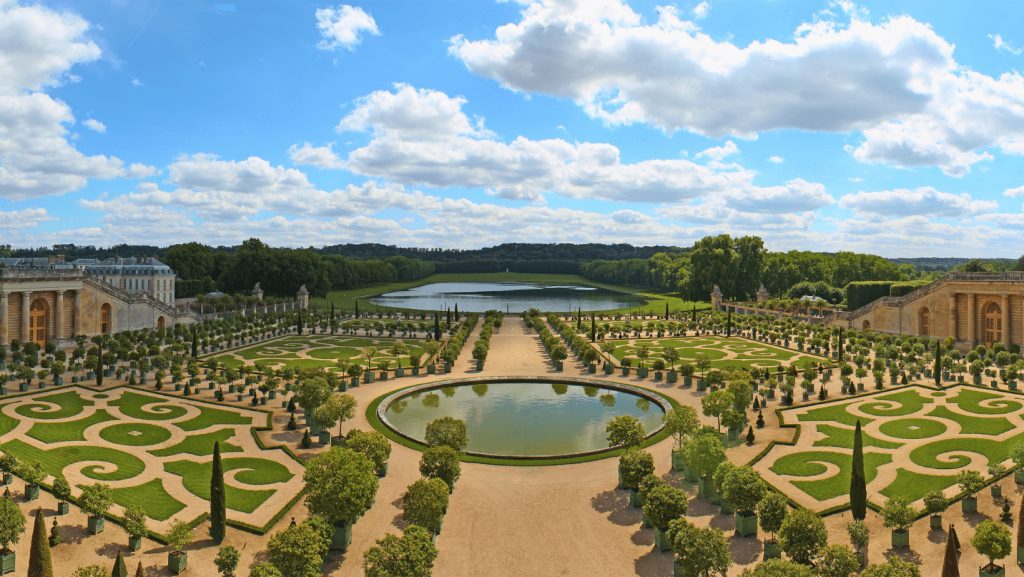
Constructing the Palace of Versailles
Located in the city of Versailles, about 10 miles west-southwest of Paris, the original residence at the Palace of Versailles was primarily a hunting lodge and private retreat for Louis XIII and his family. In 1624, Louis XIII commissioned Jacques Lemercier to build a château on the site. The walls of the initial expansion are still preserved as the exterior facade overlooking the Marble Court.
Louis XIII marked the beginning of the elaborate additions to the site. But the majority of the extravagant expansions were overseen by his son, Louis XIV, from 1661 to 1710. Louis XIV was nicknamed the “Sun King,” as it was his personal emblem. Many design elements from the Palace take inspiration from Apollo, the Greek god of the sun. A few examples that can be seen include laurel wreaths, lyres, and tripods, which are often combined with royal portraits and emblems.
Amid the ongoing construction, Louis XIV officially relocated the Court and government to the Palace of Versailles in 1682. He continued to rule until his death in 1715. His total reign of 72 years and 110 days is the longest recorded of any sovereign country’s monarch in history. After Louis XIV, a succession of kings continued to embellish the Palace of Versailles until the French Revolution began at the end of the 18th century.

Hall of Mirrors
Today, the Palace of Versailles estate is spread over 2,014 acres and contains 2,300 rooms. But perhaps the most famous room of them all is the Hall of Mirrors. The Hall of Mirrors pays tribute to the political, economic, and artistic success of France.
The vaulted ceiling is covered in 30 paintings by Charles Le Brun, which depict the victories of Louis XIV during the first 18 years of his reign. The mirrors themselves are meant to represent economic prosperity. A total of 357 massive mirrors cover the hall. This was a great display of wealth as such items were considered a luxury at the time.
The Hall of Mirrors served a number of purposes while the Palace of Versailles was the seat of government. In addition to providing an impressive display of power and wealth for visitors, it was also used as a place for waiting and meetings. On rare occasions, it was used for ceremonies that called for opulence, including royal weddings and diplomatic receptions. The Hall of Mirrors is also where the Treaty of Versailles was signed on June 28th, 1919, ending the First World War.

The Palace of Versailles Today
In 1979, the Palace of Versailles was designated as a UNESCO World Heritage Site. Given its size and opulence, it is considered one of the greatest examples of 17th-century French art. It also serves as a reminder of the history of European absolutism, the political theory that absolute power should be vested in one ruler.
Today, visitors can purchase tickets to tour the Palace of Versailles, along with the impressive park and gardens that surround it. One of the highlights of the surrounding features is the Grand Canal, which is over a mile in length. Like the rest of the Palace, the Grand Canal has quite a history. It previously played host to the King’s fleet of vessels in the summer and served as an ice skating and sledding rink in the winter.
The Palace continues to be one of the most popular tourist destinations in France. According to recent data, the Palace of Versailles sold the third-most admissions of any tourist attraction in the country, trailing only Disneyland Paris and the Louvre Museum.
Weekly Trivia
Click on the question below to reveal the answer.
Apollo Theater
Thomas Jefferson
Paris (Paris of the Nile, Paris of the Americas, and Paris of the Middle East, respectively)
